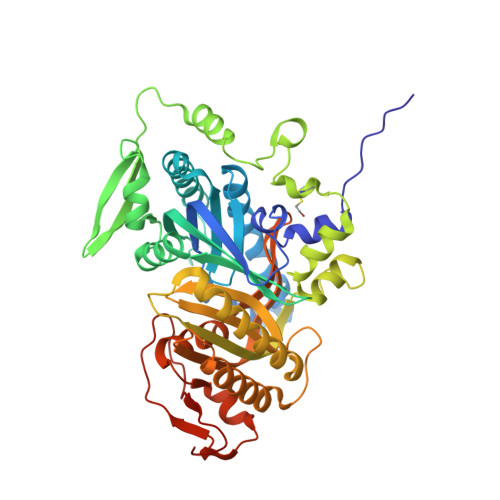Design, Synthesis, and Pharmacological Evaluation of Second-Generation Soluble Adenylyl Cyclase (sAC, ADCY10) Inhibitors with Slow Dissociation Rates.
Miller, M., Rossetti, T., Ferreira, J., Ghanem, L., Balbach, M., Kaur, N., Levin, L.R., Buck, J., Kehr, M., Coquille, S., van den Heuvel, J., Steegborn, C., Fushimi, M., Finkin-Groner, E., Myers, R.W., Kargman, S., Liverton, N.J., Huggins, D.J., Meinke, P.T.(2022) J Med Chem 65: 15208-15226
- PubMed: 36346696
- DOI: https://doi.org/10.1021/acs.jmedchem.2c01133
- Primary Citation of Related Structures:
8B75 - PubMed Abstract:
Soluble adenylyl cyclase (sAC: ADCY10) is an enzyme involved in intracellular signaling. Inhibition of sAC has potential therapeutic utility in a number of areas. For example, sAC is integral to successful male fertility: sAC activation is required for sperm motility and ability to undergo the acrosome reaction, two processes central to oocyte fertilization. Pharmacologic evaluation of existing sAC inhibitors for utility as on-demand, nonhormonal male contraceptives suggested that both high intrinsic potency, fast on and slow dissociation rates are essential design elements for successful male contraceptive applications. During the course of the medicinal chemistry campaign described here, we identified sAC inhibitors that fulfill these criteria and are suitable for in vivo evaluation of diverse sAC pharmacology.
- Tri-Institutional Therapeutics Discovery Institute, New York, New York 10021, United States.
Organizational Affiliation:


















